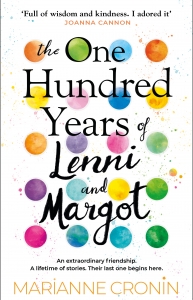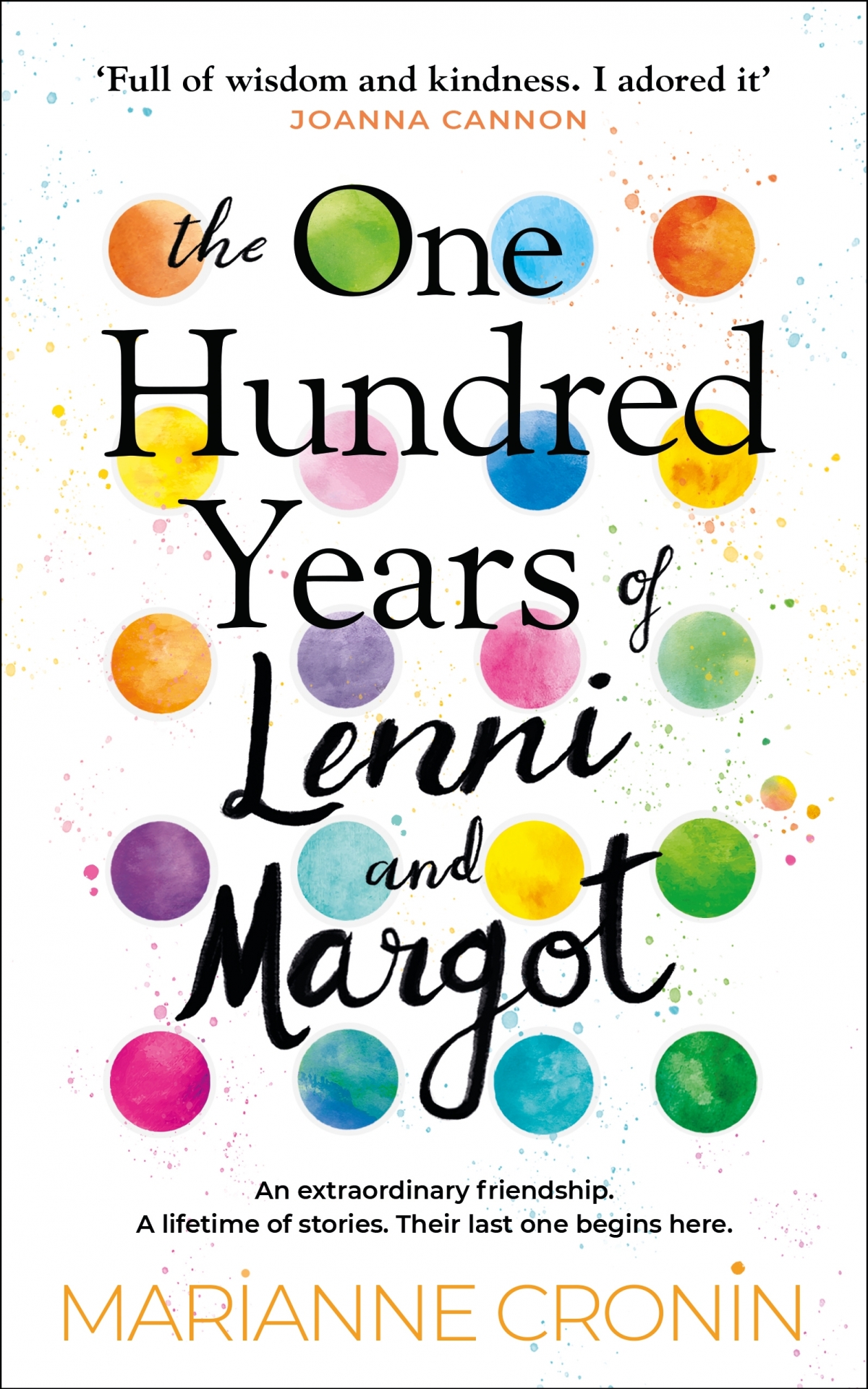
In The One Hundred Years of Lenni and Margot, Marianne Cronin unwraps the extraordinary gift of life even when it is about to be taken away, and revels in our infinite capacity for friendship and love when we need it most.
The One Hundred Years of Lenni and Margot took just over six years to write – which sounds like such a long time now.
The first words of Lenni’s that I wrote (which are more or less intact in the opening paragraphs) were written sitting at my desk in my bedroom in January 2014. I’m a total night owl. I’m always trying to change this, because it’s not very convenient in a world made for larks, but I love to write at night. It feels like there are fewer distractions. Everything’s quieter. I usually work at home, and usually when I’m alone. I get really embarrassed if anyone looks over my shoulder when I’m writing. It’s like letting someone peek at the inside of my mind.
The first draft didn’t take long – only around three or four months. Then came the task of shaping it into something that made sense. This is the part that took a long time – by then I was working full-time on a research degree and lecturing, so I edited in stolen moments in the evenings and at weekends. Although there were definitely days when I’d be in my office working on Lenni and Margot instead of on my thesis.
“In some ways, Lenni is me multiplied by a hundred and put into much higher contrast, with an added dose of bravery and irreverence.”
When I started writing, it really felt as if Lenni had come to visit me in my head.
I feel like I should be wrapped in scarves and holding a crystal skull to say that. But honestly, her voice was so clear in my mind. I knew how she’d react to things, how she’d push people’s buttons, how she would respond to kindness and to indifference. Maybe that’s why I would hear her voice so clearly in the beginning. I mentioned earlier that the first words I wrote are more or less intact in Lenni’s opening chapter. Throughout the editing process, so much of the book has changed, but that first scene with Lenni has stayed the same. It makes me happy that the reader’s first meeting with Lenni was also my first meeting with Lenni.
I love unconventional people. A lot of the books, films and TV programmes I love feature unusual, quirky characters, and in real life I definitely gravitate towards people who are eccentric in some way or other. It was only when I started talking about Lenni and Margot during the editing process that I realized how many of my characters have little quirks or personality traits that I’ve seen in other people or myself.
I didn’t intentionally set out to write a funny book.
One of the things that surprised me when The One Hundred Years of Lenni and Margot was being read by people outside my immediate family was that they kept mentioning it being funny. Sometimes Lenni would come out with something that would make me smile (usually when talking to Arthur), but finding that people have found it funny has been a really nice surprise.
I’m blessed to be surrounded by entertaining friends and family, and I’m lucky to spend time around funny people through the improv scene in the West Midlands. Doing improv is like writing a story on a piece of paper that’s already on fire. By the time you’ve finished, the whole thing is gone for ever and you can never step back and see it as a whole. That felt almost wasteful at first, at first, but it’s taught me to jump into ‘without overthinking them so much’.
“When I was writing Lenni and Margot, The Unlikely Pilgrimage of Harold Fry by Rachel Joyce was an early source of inspiration.”
When I had the idea of Lenni and Margot’s friendship growing from an art-therapy class, I went to some painting-while-drinking wine classes.
They gave me a sense of how it might feel to be in an art class. (Lenni’s frustration at not being able to paint what she can see in her head came from my own feelings!) I also collected online pictures of amateur art, to get a feel for the kind of things Lenni and Margot might have made. I love colour and art, and there are a lot of people in my life, past and present, who I associate with certain colours or items or images, but whoever marked my high school art ‘portfolio’ would tell you I have no business being an artist.
One of my favourite books (and the book I recommend the most to other people) is Homegoing by Yaa Gyasi.
I love a good ending and I think it’s one of the most beautiful endings to a book I’ve ever read. I also loved We Need New Names by NoViolet Bulawayo – the boldness of Darling’s voice really stayed with me. A Tale for the Time Being by Ruth Ozeki is another book that’s really stayed with me. I loved its oddness. When I was writing Lenni and Margot, The Unlikely Pilgrimage of Harold Fry by Rachel Joyce was an early source of inspiration. The idea of an ordinary person trying to do something extraordinary really resonated with me. In their own way, they both ask, ‘What is a life made of?’ and that’s something I was thinking about when I was working on my book.
Finally, I’ll always be glad I read This Lullaby by Sarah Dessen when I was fourteen. The protagonist’s mother is a writer who leaves notes for characters and stories everywhere. I thought everybody did that. Reading that was the moment when I thought, Maybe I’m writing ideas all over the place because they belong in a story. What resulted was a YA ghost love story that lives in a box under my bed. But as much as I cringe at it now, once I had written something of book length, I knew I could do it again. They say the first pancake is always a test.
ABOUT THE AUTHOR
 Marianne Cronin was born in 1990. She studied English and Creative Writing at Lancaster University before earning a PhD in Applied Linguistics from the University of Birmingham.
Marianne Cronin was born in 1990. She studied English and Creative Writing at Lancaster University before earning a PhD in Applied Linguistics from the University of Birmingham.
She now spends most of her time writing, with her newly-adopted rescue cat sleeping under her desk. When she's not writing, Marianne can be found performing improv in the West Midlands, where she lives. Her debut novel The One Hundred Years of Lenni and Margot is being adapted into a feature film by a major Hollywood studio.
T: @itsmcronin
_________________________________________________________________________________________________________________________________
BEFORE YOU GO…
Find out more about Marianne’s inspiration for The One Hundred Years of Lenni and Margot in Issue 7 of The Penguin Post magazine, here.
You might also enjoy The lost art of letter writing








